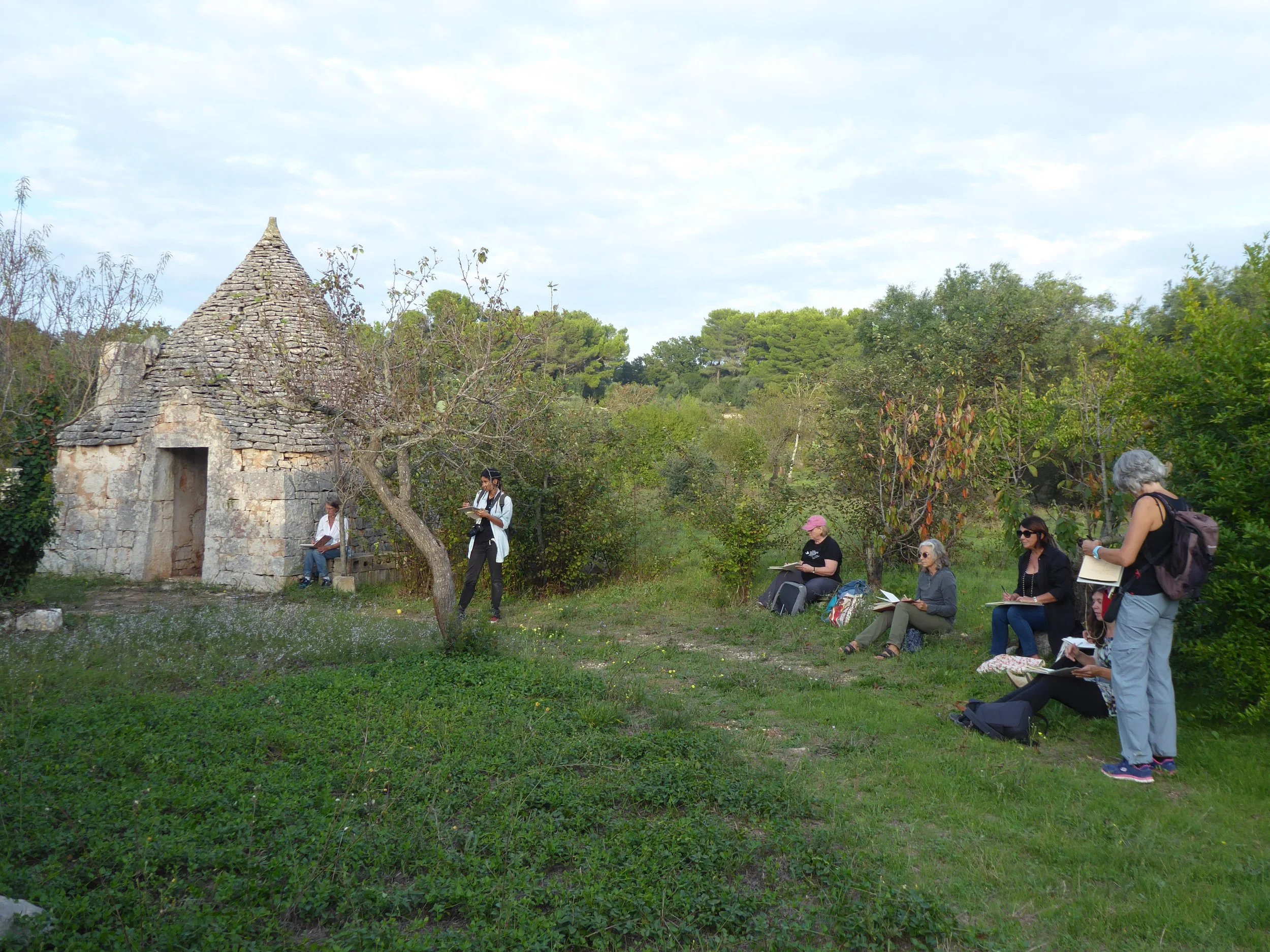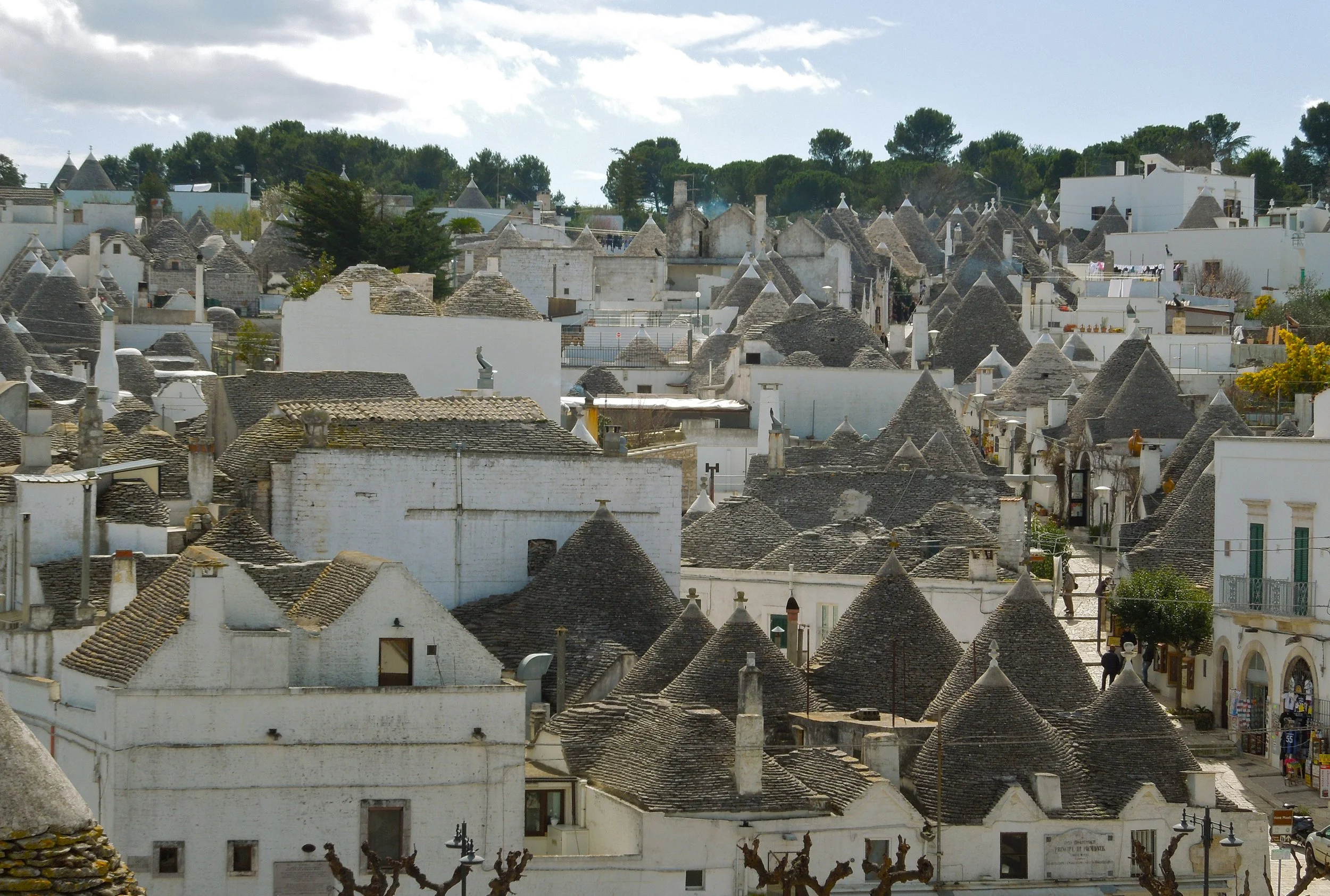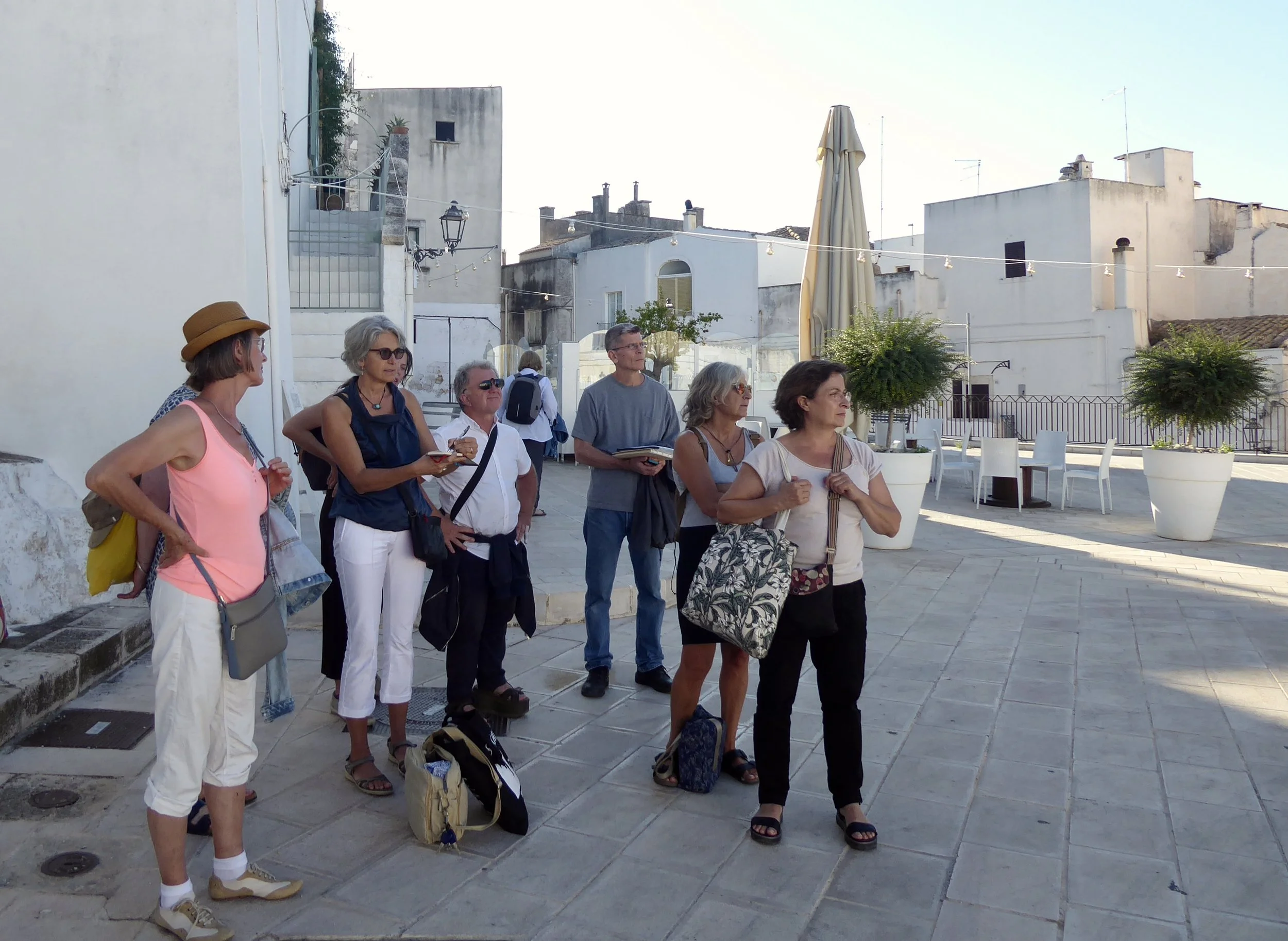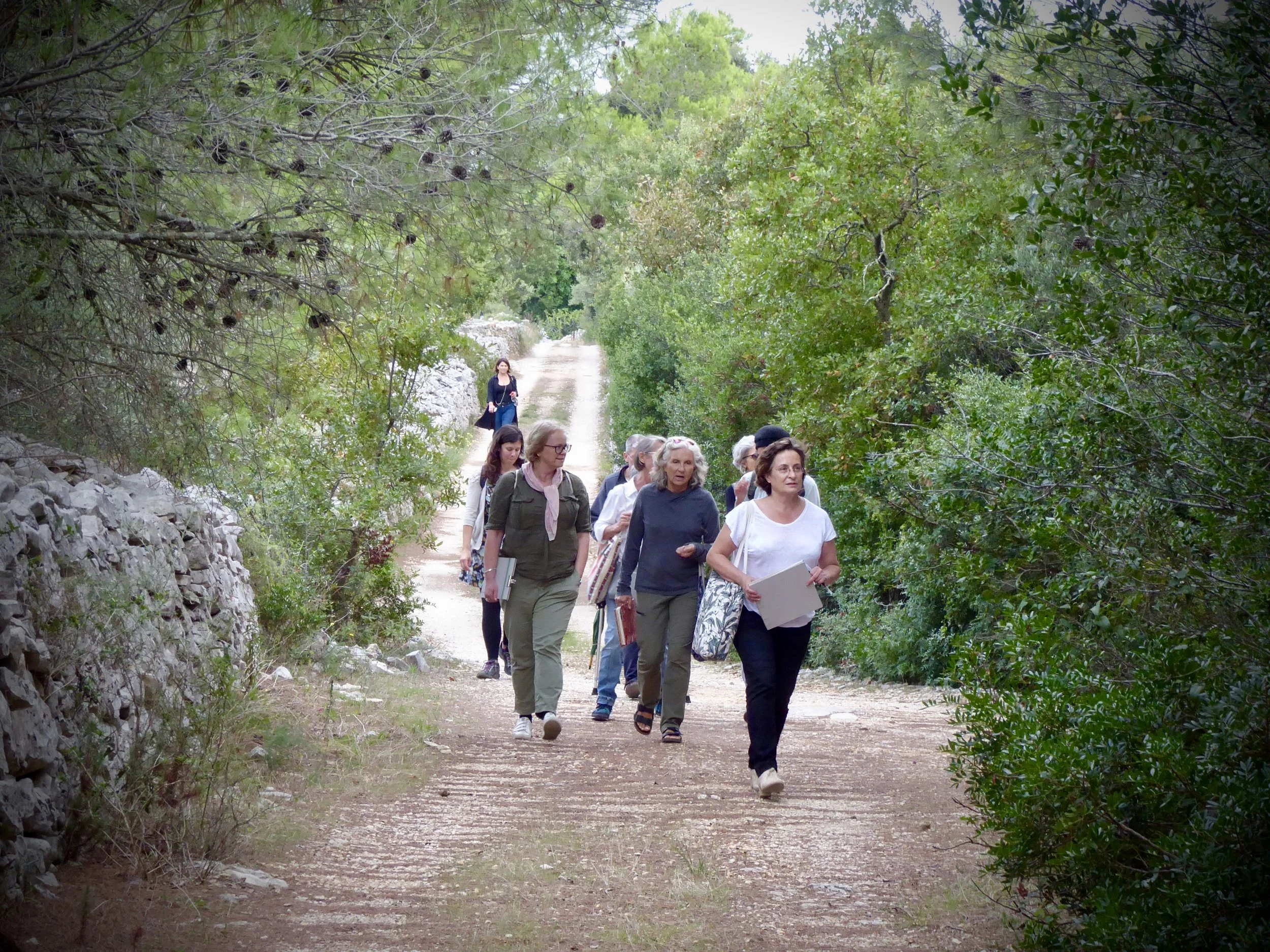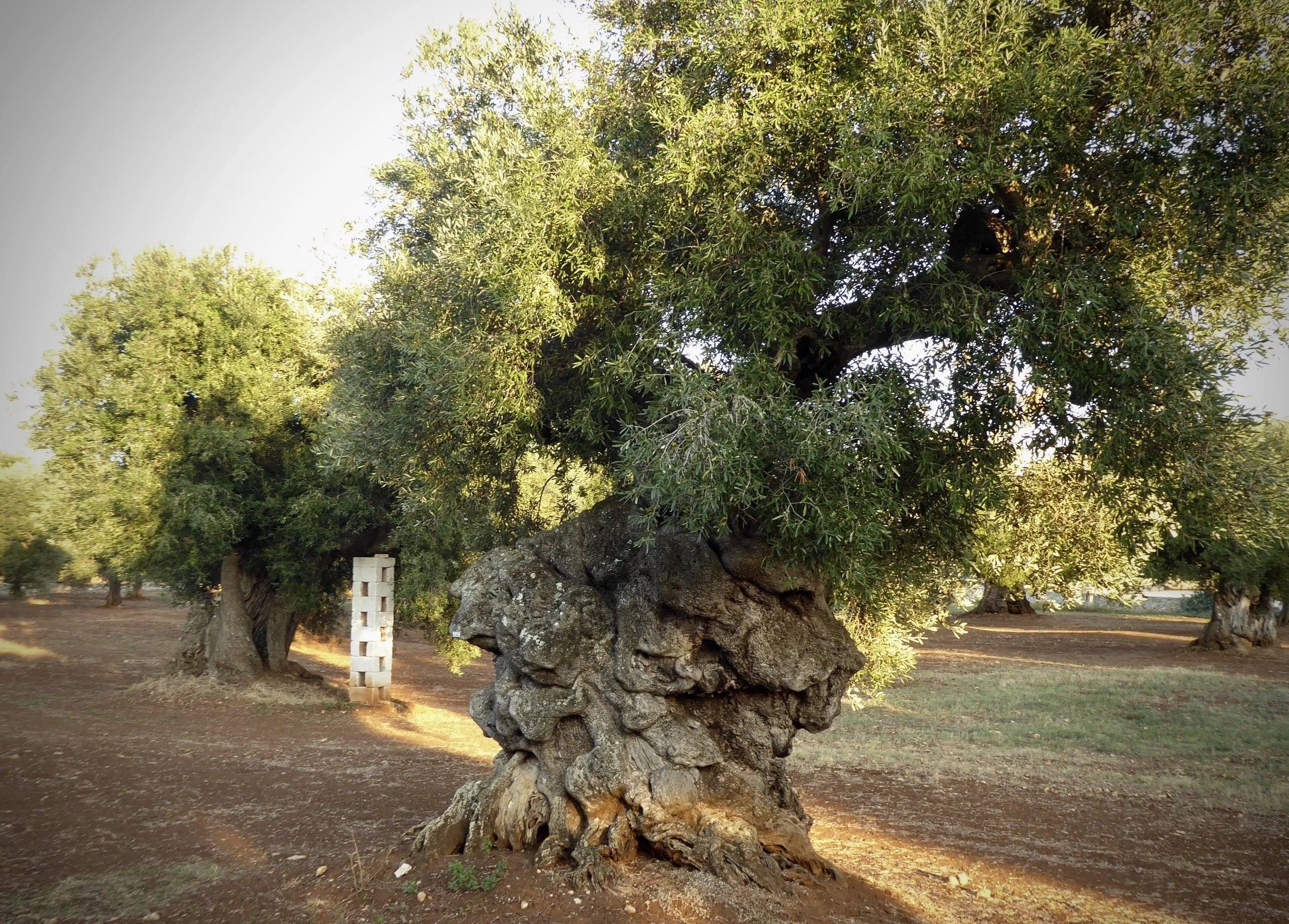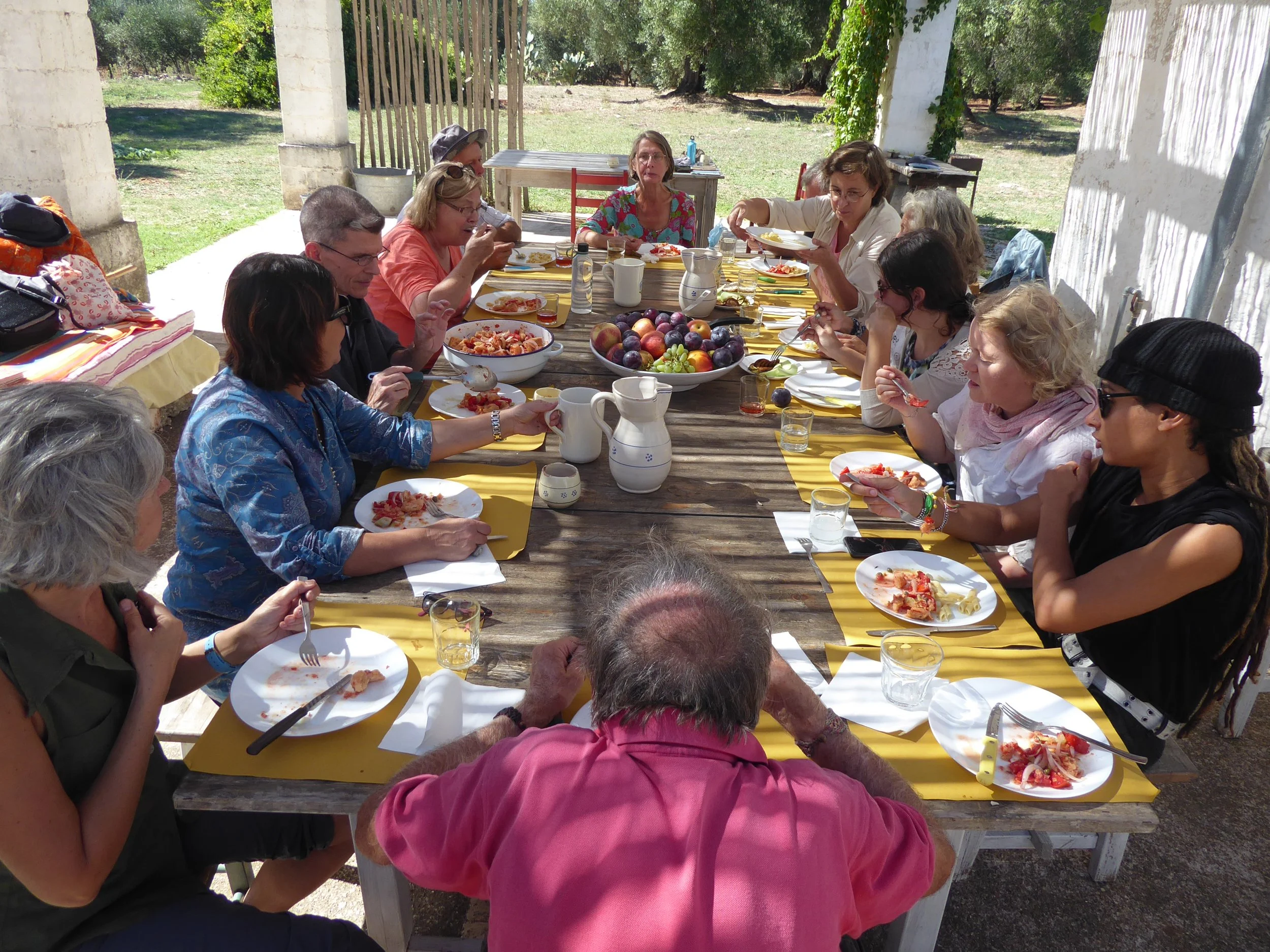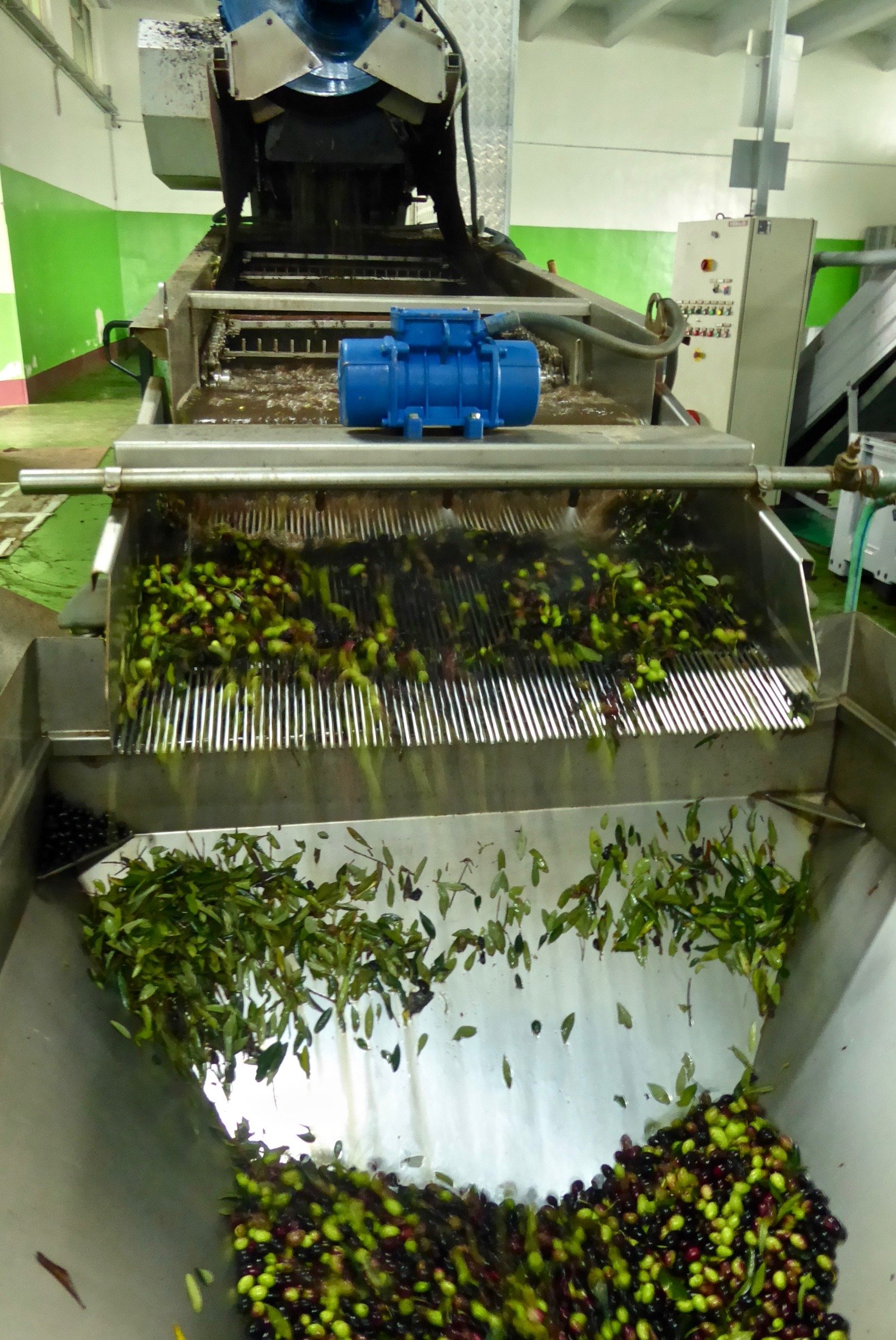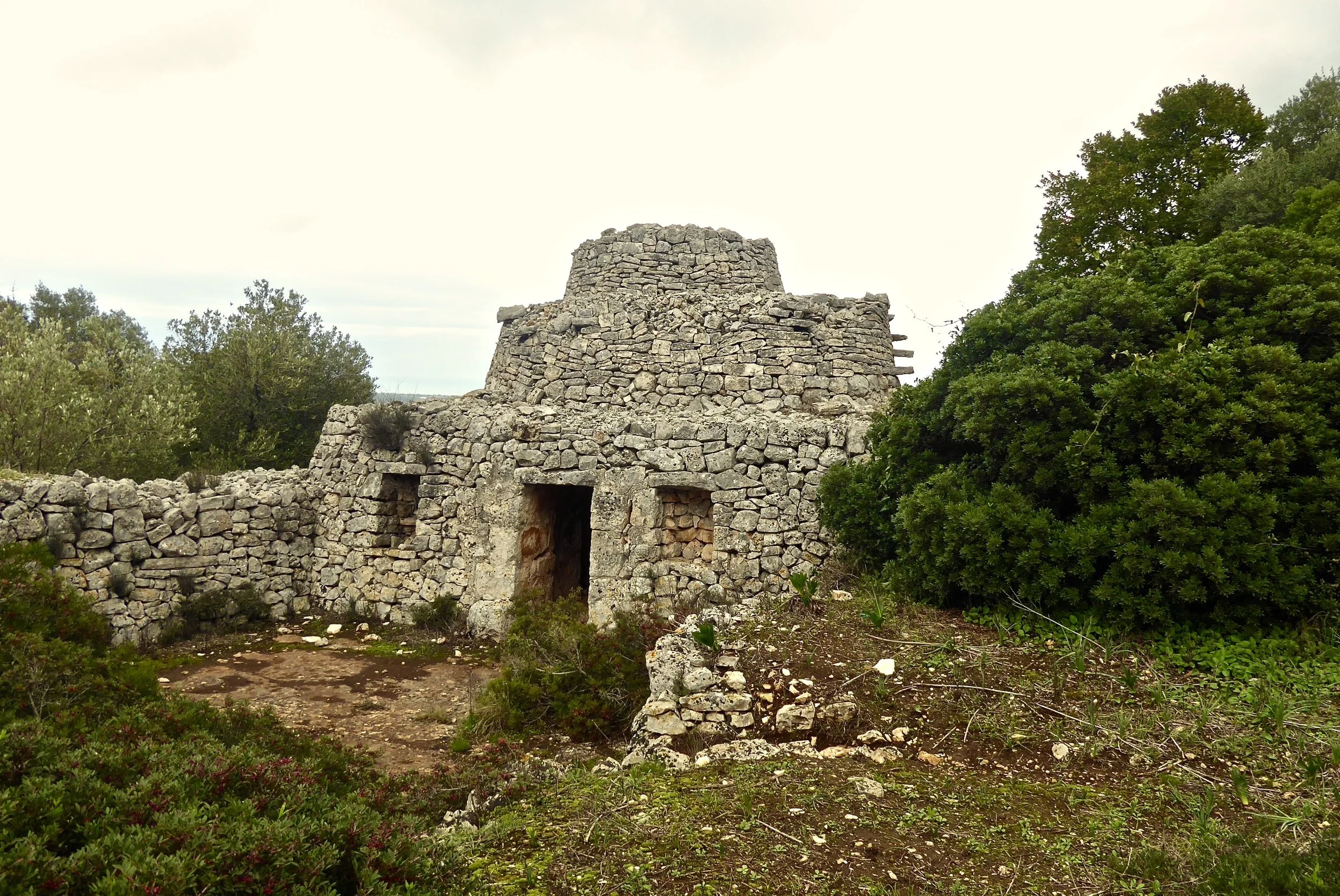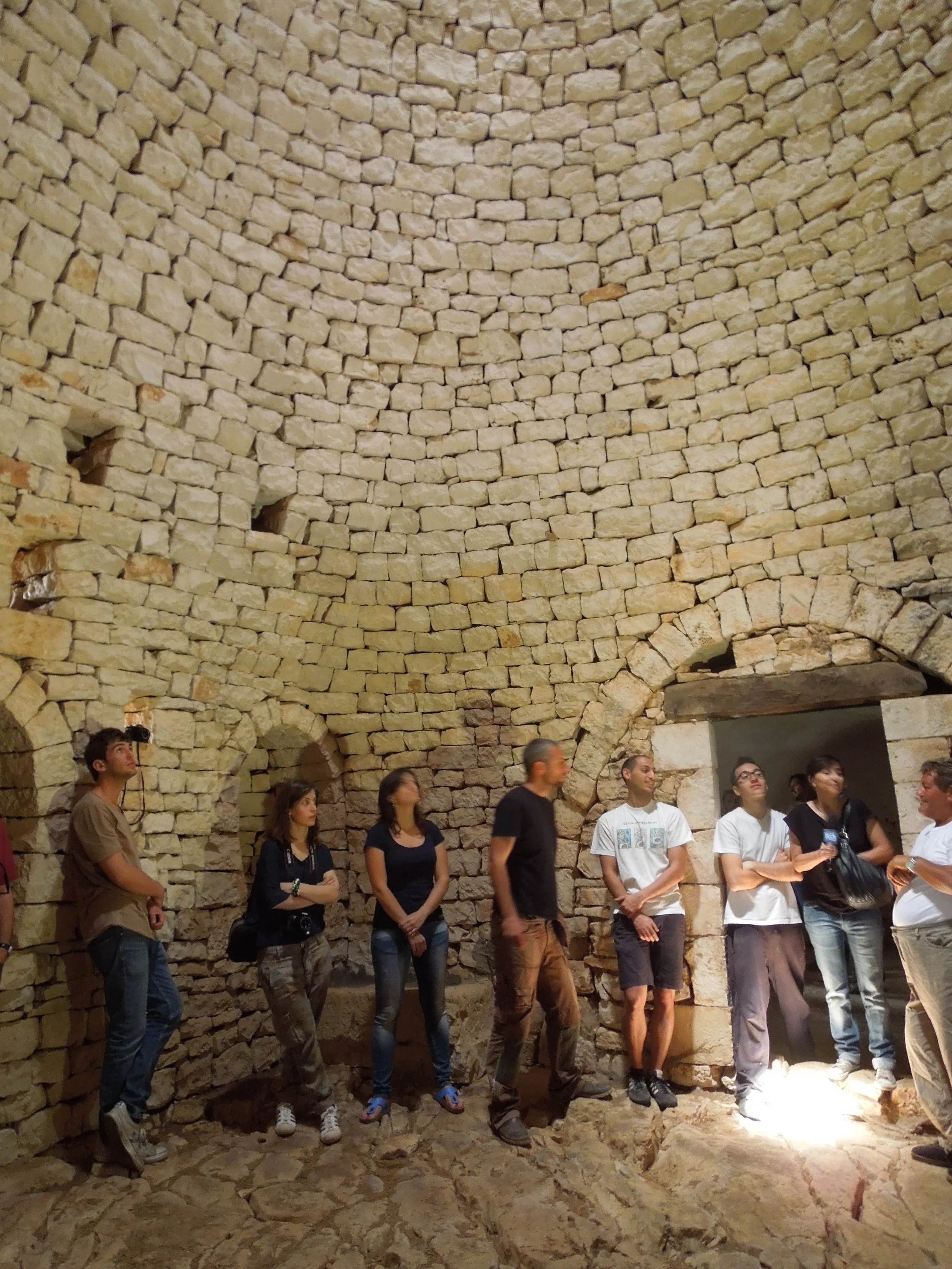PIETRE e OLIVI
STONE STRUCTURES & ANCIENT OLIVE TREES (and walking with a sketchbook)
A Sketching Retreat in Southern Italy
26 October - 2 November 2025
THE INVITATION
Join me for 8 days sketching and exploring this special part of southern Italy, Puglia! I am an architect from Chicago, USA who relocated to Puglia 13 years ago and continue to be excited and inspired about the place I’ve chosen to call home. I want to offer you not only a creative and inspiration space to sketch, but a unique experience of the Valle d’Itria that ultimately leads to a deeper understanding, appreciation, and respect for the history, place, and people of the area.
Pietre (stone) and olivi (olives) are two of the main elements that have shaped this region over millennia, and happen to be two of my biggest passions. Curiosity about the trulli, dry-stone corbelled dome structures, brought me here initially, and along with the other stone buildings of the region, have kept my interest piqued ever since. For the last ten years I have been organizing hands-on stone restoration and drawing workshops, as well as making extra virgin organic olive oil. And capturing it all in my sketchbooks.
This retreat is for someone who wants to explore this area in a deeper way, through the human-made world of architecture and the natural world of olive trees, and to share and learn with others in a supportive and nurturing environment. Your medium doesn’t matter, as long as you are comfortable putting a mark on paper, how you choose to capture what you discover is up to you. I will share a technique I use in drawing the majestic olive trees, of twig and ink, and will be available for guidance, but the form of the retreat is free of structured workshops. I’m sharing with you my secret spots, my favorite places to sketch, structured in a way that provides context for the breathtaking beauty we will experience together.
Olive harvesting season begins at the end of October so it is a special time to be in Puglia. Have you ever wondered how this liquid gold is produced? We will visit an old underground olive press, the way humans made oil for centuries, and a modern one used today. We will have an olive oil tasting, and see how olives go from the tree to the press. We will learn about the devastating disease called xylella fastidiosa that is killing these monumental trees, and have the opportunity to draw them and marvel at their grace and elegance before they are gone completely.
The retreat is in 2 parts. Part 1 is based in Ceglie Messapica, one of the white medieval towns of the Valle d’itria. Our base will be Casa Cilona, a guesthouse consisting of trulli and stone vaulted structures, nestled among centuries‐old olive, fruit and nut trees. I have been hosting workshops here since 2014.
Part 2 will be walking an ancient pilgrimage route over three days with our sketchbooks and documenting what we see along the way. In 2023 I was the recipient of an Urban Sketchers Reportage grant and documented the drastic changes happening to landscape and society through the spread of the olive disease xyllela. The area in which we will be walking is home to some of the oldest and largest olive trees in the world. Though the effects of the disease are present, the trees aren’t dead yet and they are incredible to draw. Walking allows us to absorb and observe deeply what we are experiencing. Moving on foot allows us to stop and draw when we are inspired to. After this experience I fell in love with walking long distances with my sketchbook, and want to share it.
THE COST AND WHAT’S INCLUDED
The retreat is divided into two parts. Choose just one part or do the whole experience!
PART 1 - DRAWING RETREAT WITH ACCOMODATION AT CASA CILONA, CEGLIE MESSAPICA / October 25-30
€950€, $1075 USD
Included: 5 nights double occupancy at Casa Cilona*
All meals from dinner on October 25 to breakfast on October 30
All transportation and excursion costs
*Separate accommodations for men and women, bedding and towels provided, single occupancy with additional fee at nearby location upon request
PART 2 - WALKING WITH A SKETCHBOOK, 3 DAYS ALONG THE VIA FRANCIGENA (VF) PILGRIMAGE ROUTE
€400, $450 USD
Included: 4 nights of accommodation (2 at Casa Cilona)
Meals at Casa Cilona on October 30 and November 2 (lunches and dinners on the VF not included)
All transportation and entry to Egnazia Archaeological Museum & Park (on the route)
€1350 / $1525 USD for the total experience
Note: Casa Cilona is undergoing renovations and they do not have a website at the moment. Photos will come later in the summer! You can view the location here and their facebook site here. See photos of the environment from a past drawing workshop here.
THE PROGRAM
Saturday, 25 October - ARRIVAL
Arrival to Casa Cilona in Ceglie Messapica
Sunday, 26 October - INTRODUCTION to the VALLE d’ITRIA
Morning sketchwalk in Pascarosa, afternoon in Ceglie Messapica
Monday, 27 October - FROM SOLID STONE
Grottaglie - Cave dwellings in a ravine, an abandoned quarry, and the ceramic studios of the historic center, and an ancient olive press underground
Tuesday, 28 October - OF MORTARED STONE
Cisternino, a modern olive oil press facility and olive oil tasting
Wednesday, 29 October - OF DRY STONE
UNESCO town of Alberobello, thousand-year old monumental olive trees of Ostuni
Thursday, 30 October
TBD, Departure for those not walking the Via Francigena (VF)
Friday, 31 October - VF PILGRIMAGE DAY 1
walking from Torre Santa Sabina to Montalbano, +/- 23 km (14 miles)
sleep in Montalbano
Saturday, 1 November - VF PILGRIMAGE DAY 2
walking from Montalbano to Savelletri, +/- 17 km (10.5 miles)
sleep in Savelletri
Sunday, 2 November - VF Pilgrimage DAY 3
walking from Savelletri to Monopoli, +/- 20km (12 miles)
sleep at Casa Cilona
Monday, 3 November - DEPARTURE
REGISTRATION DETAILS
The workshop is limited to 8 participants. An initial deposit of €500 is due by September 15, 2025 to secure your spot. The remaining will be collected at the workshop. There is a minimum number of 5 participants to run the workshop so please don’t make any travel arrangements without confirming the workshop is happening.
Participants are responsible for their own travel to and from the workshop. Pick up will be at the Ostuni train station. Brindisi and Bari are the two nearest airports.
If you cancel your enrolment before October 1, 2025 we will refund all payments.
Reserve your spot by contacting me at amandaroelle@gmail.com.
MORE ABOUT THE SETTING
A walk through the Valle d’Itria is a full‐on sensory experience, not something one only experiences with their eyes, but with their whole being. It is a place of adaptability and resilience, where outside and inside become blurred, and the way one lives becomes intrinsically linked to their surroundings. One is immediately immersed in the earthy smells of wild herbs underfoot, the constant Mediterranean breeze, and the unavoidable presence of raw stone.
For centuries humans have sculpted this landscape to render it habitable and productive. With extreme resourcefulness, farmers moved earth, terraced fields, and built stone retaining walls to hold back soil and capture rainwater. They excavated bedrock, creating cisterns for rain water storage. The stone shelters among the vineyards and olive groves appear to have grown right out of the ground below and in some instances they did. Stone excavated for a cistern was used to build the walls and the roof of the dwelling adjacent to, or in some cases directly above the cistern. Indeed, it is a grounding and unusual experience to be inside of a building completely constructed of the material excavated from right beneath your feet.
The buildings of the Valle d’Itria are unique to this place simply because they could not be anywhere else.
The structures we inhabit today are often composed of manufactured materials and the construction is usually hidden behind drywall, plaster, and furnishings. The stone buildings found in Puglia, whether they be the dry‐stone, cone‐shaped trulli, the intricately vaulted, mortared buildings of the fortified medieval towns, or the remains of Rupestrian cave dwellings carved from the soft stone of the gravine, offer a way to observe and experience raw material used in an honest, creative, and beautiful way.
An Abundance Of Stone
The trulli and other stone structures of the Valle d’Itria are not simply objects in a landscape; rather they embody the souls and stories of the people who built them. The masons of these structures were people of exceptional ingenuity, who used limiting material to their advantage.
These dwellings are also reflective of the geologic conditions underfoot. The seemingly deep red soil on the surface quickly gives way to a karst geology, a limestone labyrinth of fissures and canyons. The stone is limitless, and relentless. Sometimes referred to as “the land that grows stone”, farmers and herders overtime have worked tirelessly to clear their fields of the small boulders constantly emerging from the ploughed soil.
The area also lacks surface water sources like lakes and rivers, and rain water is collected in cisterns during the rainy winter months to last throughout the dry summer. Given these physical conditions: the karst geology, the abundance of stone available, and the lack of sand from lakes and rivers typically used for mortar in masonry construction, it’s not surprising that a dry‐stone typology emerged.
Stone is a limiting material for building, but creativity comes from limitations.
A trullo is the most common example of vernacular architecture in the Valle d’Itria and has become the signature building type of Puglia. A trullo is built of stones collected and quarried on site, and constructed without mortar. Similar ancient form and building typology is found across the Mediterranean and places in Europe and the Middle East where the stone was suitable to this type of construction. The trulli are particular interesting because they are still inhabited and being restored for modern day use.





